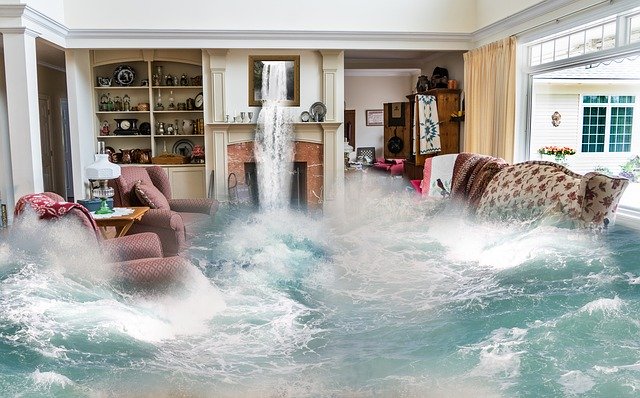If you get home from vacation and see that you have water damage, you should also know there is a risk for mold growth. If not taken care of soon enough, mold will colonize and result in a growth that could be a health hazard. The common time frame for mold growth to begin is within 24 to 72 hours after a flood, but real life experiments have shown that timeline to be much longer, in some cases as long as 7 days. Whether it happens in a day or a week is not as important as where mold typically grows and how you can take care of it.
Mold can be extremely dangerous, causing allergic reactions, respiratory issues and property damage. Ensuring that your home is well-ventilated, clean and dry will significantly reduce the risk of mold growth. Certain design and structural choices may also make your home more prone to mold, so it is important to research the type of materials you use and the designs based on the climate of the area you live in.
5 Places Mold Grows After a Flood
1. Drywall.
If you have typical drywall, it is porous, which means it will soak up moisture and provide a good environment for mold growth when it is wet. In most cases, the porous nature of drywall makes it necessary to remove it when exposed to water. In some cases, it may be dried by dehumidifying the environment. In such scenarios, it often becomes necessary to replace drywall, as its porous composition creates an ideal breeding ground for mold. The process of replacement should ideally be entrusted to an experienced drywall handyman offering home repair services in Woodbury, or in your city. That way, you can be sure that the job is done efficiently and effectively. By removing and replacing the affected drywall, you not only address the issue at its root but also guarantee that your living space remains mold-free and conducive to a healthy environment.
2. Carpet.
Carpet is similar in its mold growing capabilities because it too is porous. Many people remove it during a flood because it can be difficult to clean, but it is not impossible. It is wise to enlist the help of an extreme carpet cleaning specialist who specializes in mold removal. You could look up commercial carpet cleaning services in Delaware (or one near you) to get your carpet a thorough cleaning.
3. Insulation.
Insulation is porous, but it is an even bigger mold grower because it is not visible, so mold can grow undetected for a long while before it is noticed. Mold, like drywall, should be removed when it is moldy. You can control the mold by dehumidifying the area, but the better option is to discard of the building materials inhabited by mold.
5. Ceiling Tiles.
Ceiling tiles are another porous material that can harbor mold, and it cannot be cleaned. Therefore, it is essential to remove ceiling tiles when they have been water damaged. Fortunately, ceiling tiles are easily replaced, but it is important to replace them and not simply dry them and let them remain.
Important to Fully Remove Mold
These 5 places are not the only places where mold will decide to grow, and in some circumstances, large mold growths can result in wooden construction materials needing to be removed from the building. This is why it is so important to prevent mold whenever possible by keeping buildings properly ventilated and dry.
